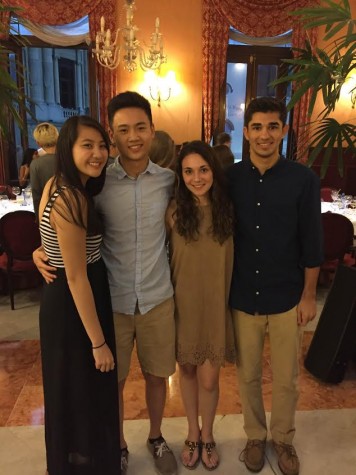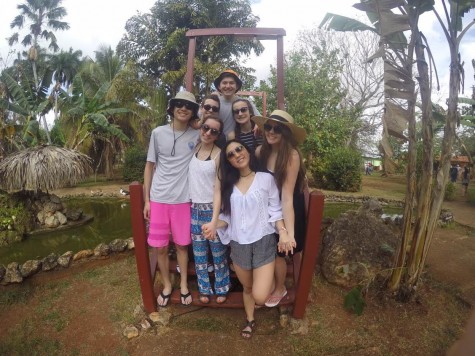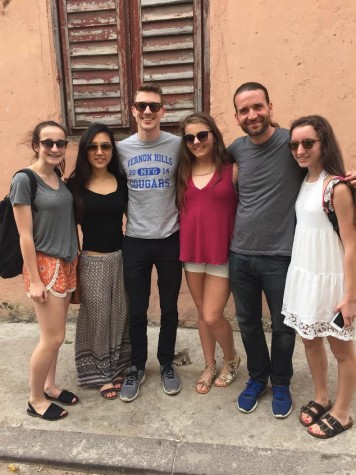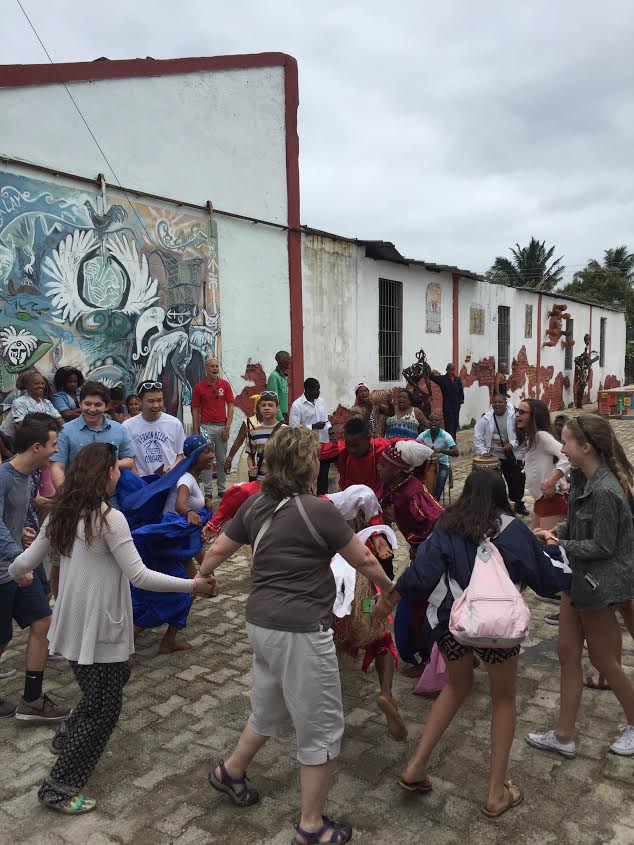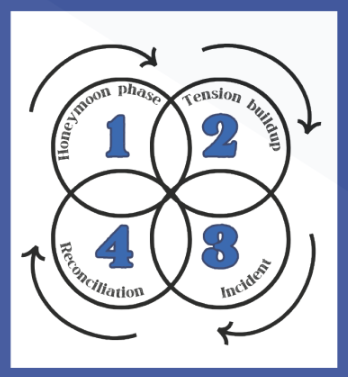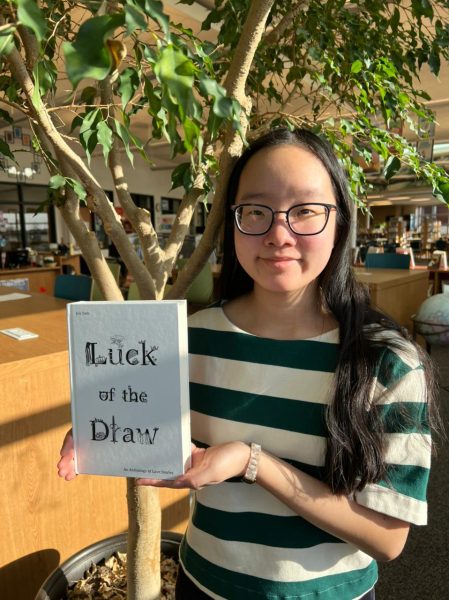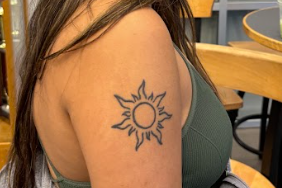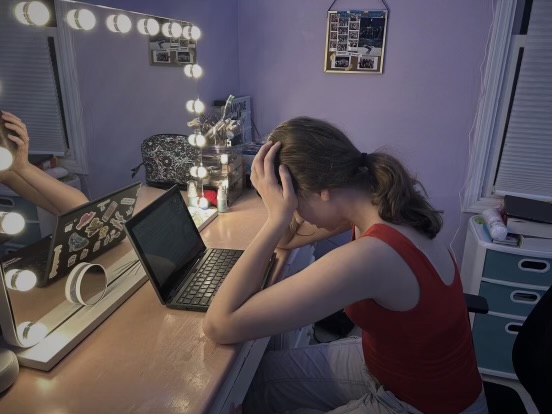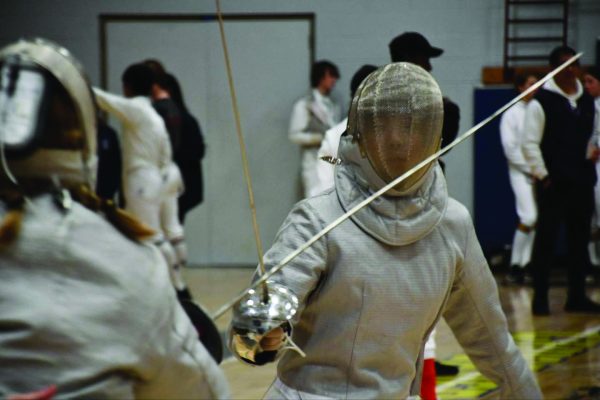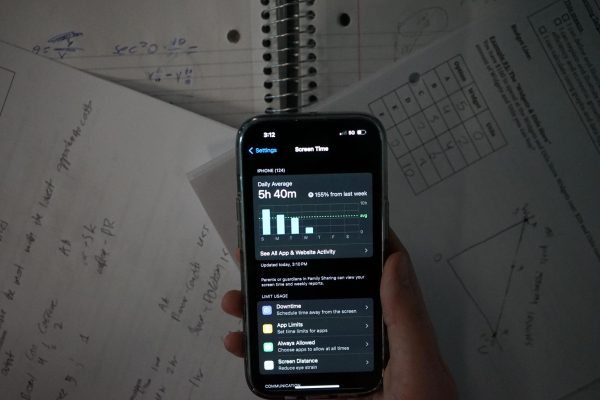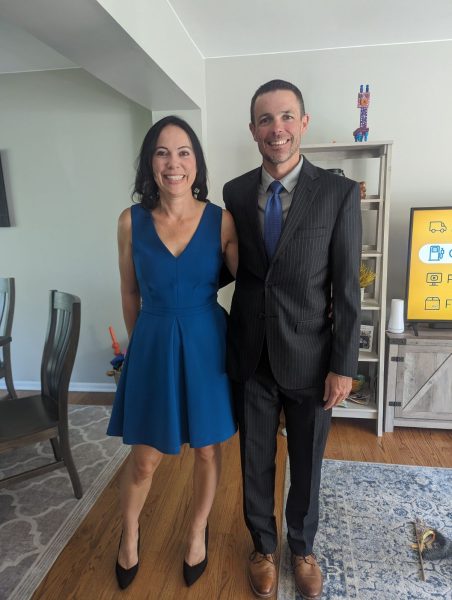Orchestra goes to Cuba
The VHHS Orchestra is dancing in a small town of Cuba where the community practices Santeria.
Over spring break the VHHS Orchestra had the opportunity to go to Cuba. The students who were on the trip were also able to share their musical abilities with the people of Cuba. Overall, the students had a great time as they experienced new culture, food, and beautiful scenery.
The students took off at about 2 am Saturday morning and flew to Miami.They were stuck in Miami for five hours until they finally departed for Cuba. Once they arrived in Cuba, the kids were able to meet their tour guides and took a bus from Havana to Varadero. They spent about 2 hours every day on the bus while the tour guides explained the landscape and history.
“[The trip was]o jam-packed that it would take a long time to describe everything we did,”violin player Diana Mahlis (12) said. “Everyday of the trip felt like three days, but in a good way.”
The first real day out in Cuba, the students visited the Bay of Pigs. There they went snorkeling, and tried some new foods like flan, exotic fruits, and many different meats. The following day, they went to the Coincidencia farm, which the owner founded to grow rare tropical fruits and make ceramics. The students were all able to try some exotic fruits that they had never heard of or seen before. Later that day they went back to the resort where they were taught Cuban dancing.
On Thursday, the orchestra went back to Havana, where they visited a music school where the students played various instruments and sang for them. They then got the opportunity to play for the school as well. It was a great way for both the VHHS students and the Cuban students to see how each other plays. That evening, they went to a restaurant with a performance of traditional Cuban music and dances.
Beside just playing for the school in Old Havana, the VHHS Orchestra performed two other times. They also performed in their first hotel for the guests of the hotel, followed by a performance in the streets for the whole community.
The next day the kids go to go on a bike tour through Miramar. Lauren Katz (10), Mahlis, and Stephen Chah (12), describe this part as the best part of the trip.
“The colorful architecture was amazing. It seemed to be a mix between a European and Latin architecture,” Chah said. “The small alleyways and cobblestone streets of European countries and the colorful and dirty buildings of Latin countries. It was beautiful and we experienced the culture at a whole knew level,” said Chah.
On top of this three-mile bike ride through the town they were also able to see the Plaza de la Revolucion, a fruit and vegetables market, the Statue of John Lennon, and the Chinese Quarter.
The students also saw cigar farm/factory, a horse farm, and many different places to eat including fancy restaurants, outdoor restaurants in a plaza, places to eat in farms with great scenery, and nice rest stops. In Old Havana they saw the most old 50s style cars and old Cuban architecture with colorful buildings. They were also able to see Cuban agriculture and how they are able to practice sustainable farming.
The culture in Cuba was very different than any traditional European or American country that most of VHHS students are used to.
“The culture is very different in the way that their meals are prepared,” Katz said. “Their meals are very traditional in rice, beans, and seafood. Also, the country is very based on music and art. Murals fill the walls of the city representing the culture and the music played in the streets represents the city.”
“Our government and studies made it seem like they were being severely oppressed by their totalitarian ruler,” Chah said, “but through every tour, our guides told us that the populous thought the Castro’s to be their great leader. We also saw that the country did not have much. We had to pay a “tip” of a few pesos to use toilet paper in public restrooms because there wasn’t much toilet paper in that country.”
Not only was the culture very different, but so was the food “ I think we ate the fruit every day of the trip,” Mahlis said. “ Although guava was not new to me, the whole trip diet was very healthy and filled with nutrient-filled food.”
They tried Mamey, Cuba’s national fruit which is the which looks and tastes like soft sweet potato. They also tried starfruit, papaya, guava and more. Beside eating tons of different fruits, the food was very meat heavy.
Overall the trip was a huge success. The VHHS Orchestra was able to immerse themselves into a new culture, show off their talents, and get the chance to hang out with their fellow peers who they may not have been as close with beforehand.
